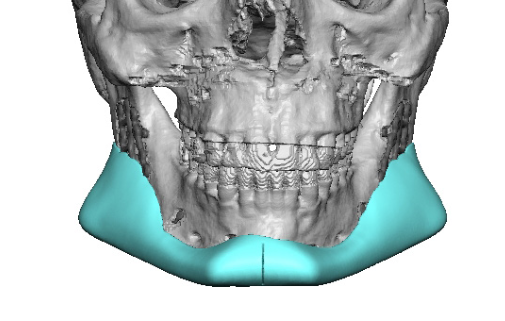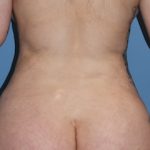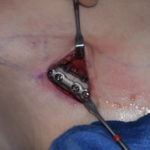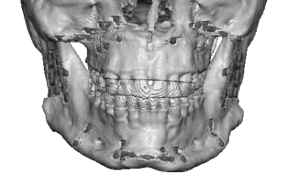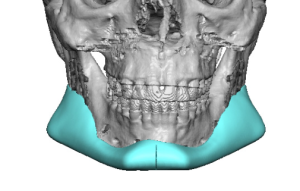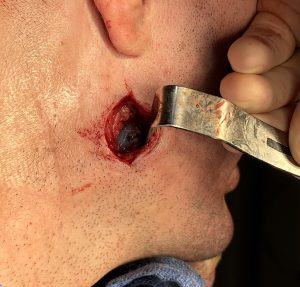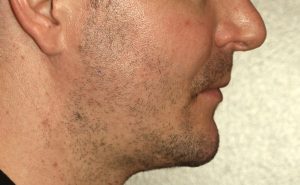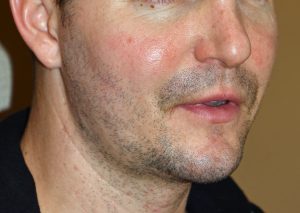There are two fundamentally different approaches to achieving a more complete jaw augmentation: the chin wing osteotomy and the custom jawline implant. (This discussion excludes standard chin and jaw angle implants, as they lack a connected effect.) The chin wing procedure uses an autologous technique, splitting and repositioning bone, whereas a custom jawline implant is an onlay device that reshapes the jaw externally. These two methods differ not only in concept but also in their aesthetic outcomes.
The chin wing is essentially an extended sliding genioplasty. Rather than making a short angled bone cut from the chin to the inferior border, it involves a long horizontal osteotomy extending back toward the jaw angle. In theory, this mobilizes the entire inferior border of the mandible, moving it downward and forward to create a new jawline shape. In practice, however, the bone cut often has minimal, if any, effect at the jaw angle in terms of vertical length or width augmentation — and frequently does not reach the gonion point.
While the chin wing can produce good results for many patients, its limitations in creating a truly three-dimensional jaw augmentation lead some to seek further enhancement. The only option to achieve this is with a custom jawline implant.
Case Study
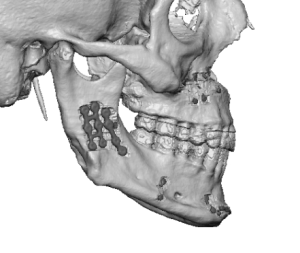
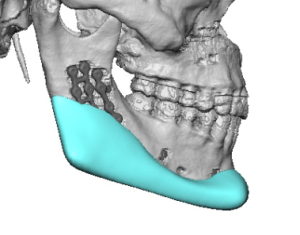
-
Jaw angle width: +11 mm
-
Jaw angle vertical lengthening: +6 mm
-
Chin projection: +2 mm (minimal, aimed at creating a squarer chin shape)
-
Total implant volume: 18 ccs
Given his prior history of both jaw and chin osteotomies, the patient preferred to avoid further intraoral surgery. Therefore, we placed the implant entirely through an external approach, using an anterior submental incision and bilateral external jaw angle incisions.
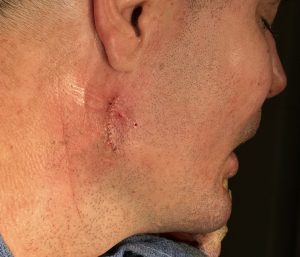
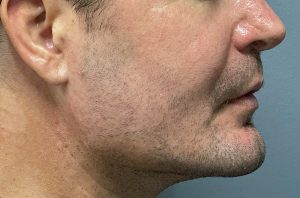
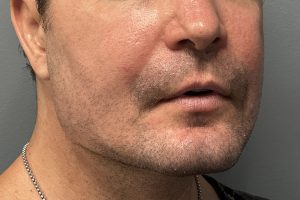

Key Concepts
This case illustrates two important principles in aesthetic jaw augmentation:
-
The chin wing osteotomy is an autologous bone procedure that primarily augments the anterior two-thirds of the lower jaw.
-
For a more complete, three-dimensional result, a custom jawline implant can be placed secondarily over a prior chin wing, with no need to remove existing hardware.
-
A fully external approach for custom jawline implant placement can be appropriate in select male patients, offering acceptable scarring and avoiding additional intraoral incisions.
Dr. Barry Eppley
World-Renowned Plastic Surgeon

